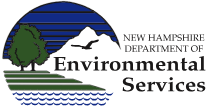Firefighting Training Activities
NHDES allows New Hampshire fire departments to conduct open burning for instruction and training purposes.
NHDES regulates firefighter instruction and training activities to minimize emissions of toxic air pollutants that could result from these activities while providing firefighters real-life fire suppression and safety training opportunities. Under the authority of the Air Pollution Control Act and as outlined in Env-A 1003 , NHDES allows fire departments to conduct firefighter instruction and training activities once certain requirements are met. Fire departments may burn solid fuels, liquid fuels, a motor vehicle or a structure. However, NHDES prohibits the burning of demolition debris. In addition, NHDES requires that a state-certified fire instructor or specialty instructor directly supervise all firefighter instruction and training activities.
At least 10 days before conducting the training activity, the fire department must submit an ARD-1003 Form Live Fire Instruction and Training Activity to NHDES.
Additional Structure Training Requirements
 NHDES requires that fire departments remove certain hazardous materials, such as asbestos, before conducting training activities in buildings. If a structure will be burned as a training activity, NHDES requires that the owner of the property hire a qualified asbestos inspector to conduct an asbestos inspection of the structure. If asbestos is not found, then the owner must provide the fire department with a certification from the inspector stating that no asbestos was found.
NHDES requires that fire departments remove certain hazardous materials, such as asbestos, before conducting training activities in buildings. If a structure will be burned as a training activity, NHDES requires that the owner of the property hire a qualified asbestos inspector to conduct an asbestos inspection of the structure. If asbestos is not found, then the owner must provide the fire department with a certification from the inspector stating that no asbestos was found.
If asbestos is found, the owner will need to hire a New Hampshire licensed asbestos contractor to properly remove the asbestos prior to conducting the training activity. NHDES requires that the owner or an asbestos abatement contractor submit an Asbestos Demolition/Renovation Notification Form at least 10 days before abatement activities commence.
To get a complete list of hazardous materials required to be removed from a structure prior to a training activity, see Env-A 1003.




